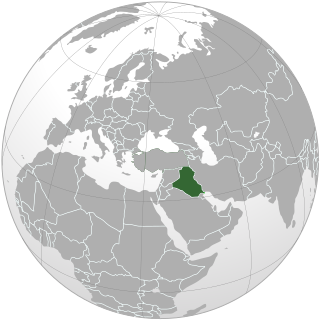 W
WThis is a list of United States ambassadors, or lower-ranking heads of a diplomatic mission to Iraq.Alexander K. Sloan (1931) – Chargé d'Affaires Paul Knabenshue (1932–1942) – Minister Thomas M. Wilson (1942) – Minister Loy W. Henderson (1943–1945) – Minister George Wadsworth II (1946–1948) – Minister Edward Savage Crocker II (1948) – First ambassador Burton Y. Berry (1952–1954) Waldemar J. Gallman (1954–1958) John D. Jernegan (1958–1962) Robert C. Strong (1963–1967) Enoch S. Duncan (1967) – Chargé d'Affaires
 W
WThis is a list of the cities in Kurdistan Region in Iraq.
 W
WThe following is a list of dams and reservoirs in Iraq. They are sorted according to their location in either the Euphrates or the Tigris river basin.
 W
WIraq's 18 governorates are subdivided into 120 districts (kaza). The district usually bears the same name as the district capital.
 W
WIraq presently consists of 19 governorates, also known as "provinces". As per the Iraqi constitution, three or more governorates can join to form an autonomous region. Baghdad and Basra are the oldest standing administrative regions of Iraq while In 2014 the decision was made to create the Halabja Governorate out of the Halabja District of the Sulaymaniyah Governorate.
 W
WThe following outline is provided as an overview of and topical guide to Iraq:
 W
WThe king of Assyria, called the governor or viceroy of Assyria in the Early and Old periods, was the ruler of the ancient Mesopotamian kingdom of Assyria, which existed from approximately the 26th century BC to the 7th century BC. All modern lists of Assyrian kings generally follow the Assyrian King List, a list kept and developed by the ancient Assyrians themselves over the course of several centuries. Though some parts of the list are probably fictional, the list accords well with Hittite, Babylonian and ancient Egyptian king lists and with the archaeological record, and is generally considered reliable for the age.
 W
WThe king of Babylon was the ruler of the ancient Mesopotamian city of Babylon and its kingdom, Babylonia, which existed as an independent realm from the 19th century BC to its fall in the 6th century BC. For the majority of its existence as an independent kingdom, Babylon ruled most of southern Mesopotamia, composed of the ancient regions of Sumer and Akkad. The city experienced two major periods of ascendancy, when Babylonian kings rose to dominate large parts of the Ancient Near East; the First Babylonian Empire and the Second Babylonian Empire.
 W
WThe king of Iraq was Iraq's head of state and monarch from 1921 to 1958. He served as the head of the Iraqi monarchy—the House of Hashim. The king was addressed as His Majesty.
 W
WThe Sumerian King List is an ancient text in the Sumerian language, listing kings of Sumer from Sumerian and neighboring dynasties, their supposed reign lengths, and the locations of the kingship. This text is preserved in several recensions. The list of kings is sequential, although modern research indicates many were contemporaries, reflecting the belief that kingship was handed down by the gods and could be transferred from one city to another, asserting to a hegemony in the region.
 W
WIraq area codes can be 1 or 2 digits and the subscriber numbers are usually 6 digits. In Baghdad and some other governorates, they are 7 digits. The mobile numbers have 10 digits, beginning with the 3-digit code of each operator followed by 7 digits.